The Historic Legacy of Feth-i Bulend: Ottoman Empire’s Ironclad Marvel
In the late 19th century, amidst a period of rapid technological advancements and naval modernization, the Ottoman Empire embarked on a remarkable journey in maritime innovation with the commissioning of the ironclad warship Feth-i Bulend. This vessel, with its impressive design and strategic significance, left an indelible mark on Ottoman naval history.
Feth-i Bülend (Ottoman Turkish: “Great Victory”) was an Ottoman ironclad warship built in the late 1860s, the lead ship of her class. The Ottoman Navy ordered her from the British Thames Iron Works, and she was laid down in 1868, launched in 1869, and commissioned in 1870. She was armed with four 229 mm (9 in) guns, was powered by a single-screw compound steam engine with a top speed of 13 knots (24 km/h; 15 mph).
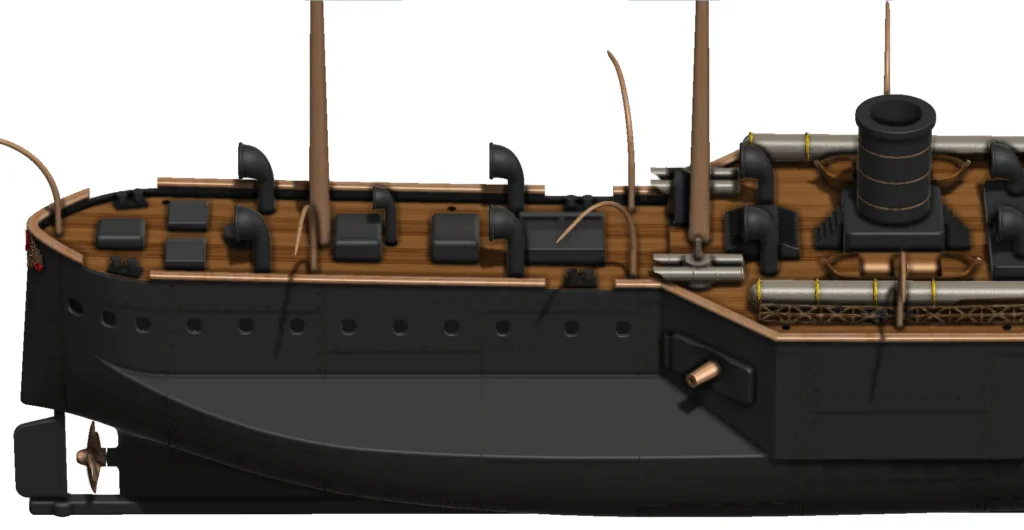
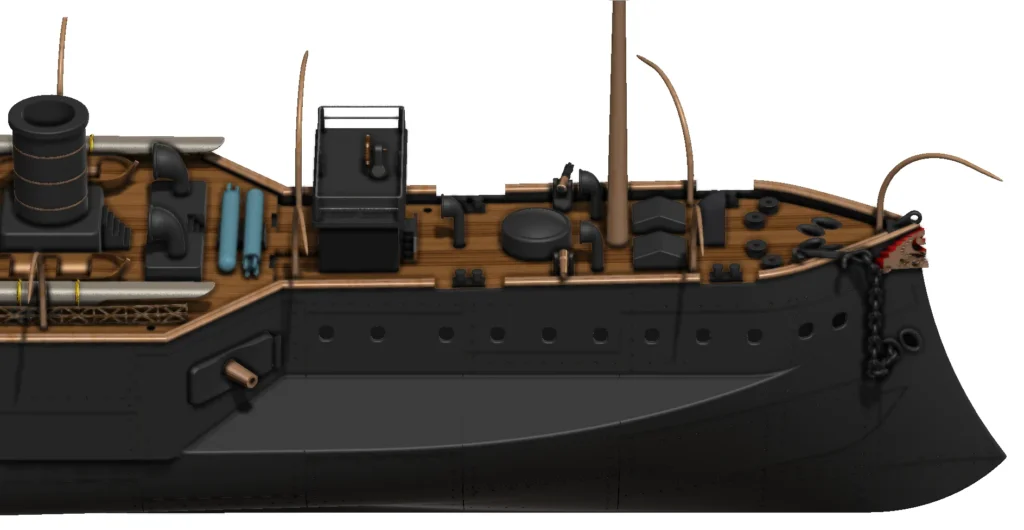
Continue reading for more images, info and a free STL file of a panorama of Feth-i Bülend on the high seas. You can proceed to purchasing our 3d printable, multi-piece model of the ironclad for building your own legend by clicking here. The model is a 3mm thick hull with empty interior, well suitable for R/C projects. This is a 80MB file pack that includes Feth-i Bülend in high quality STL files (89 separate files) and Unreal Engine Compatible GLB file.
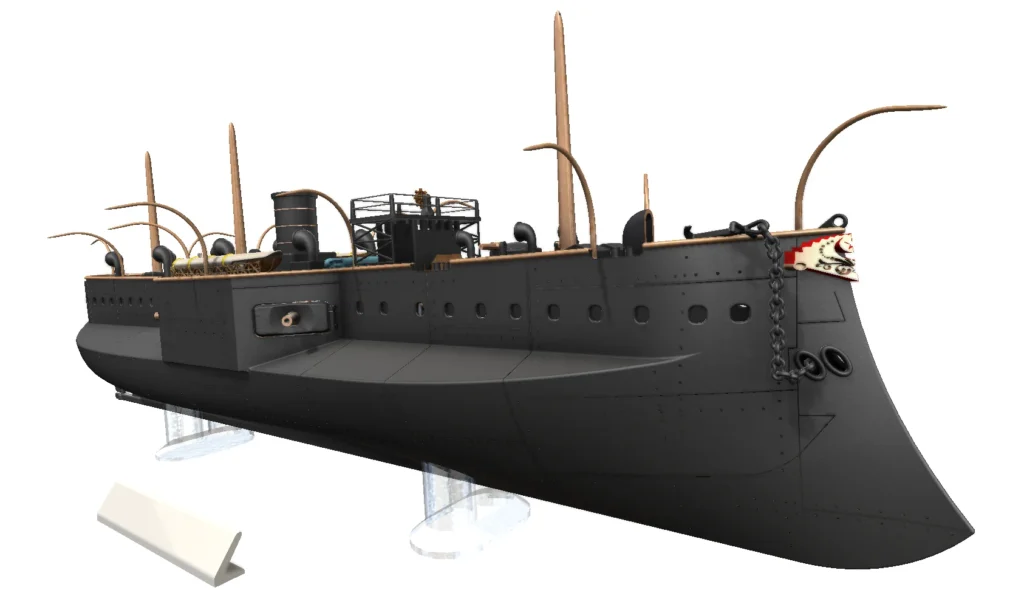
Technological Advancement and Design
The Feth-i Bulend, launched in 1875, epitomized the Ottoman Empire’s efforts to embrace modern naval technologies. Built in the shipyards of France, it represented a shift from traditional wooden ships to armored ironclads, showcasing the empire’s determination to compete in the evolving maritime landscape.
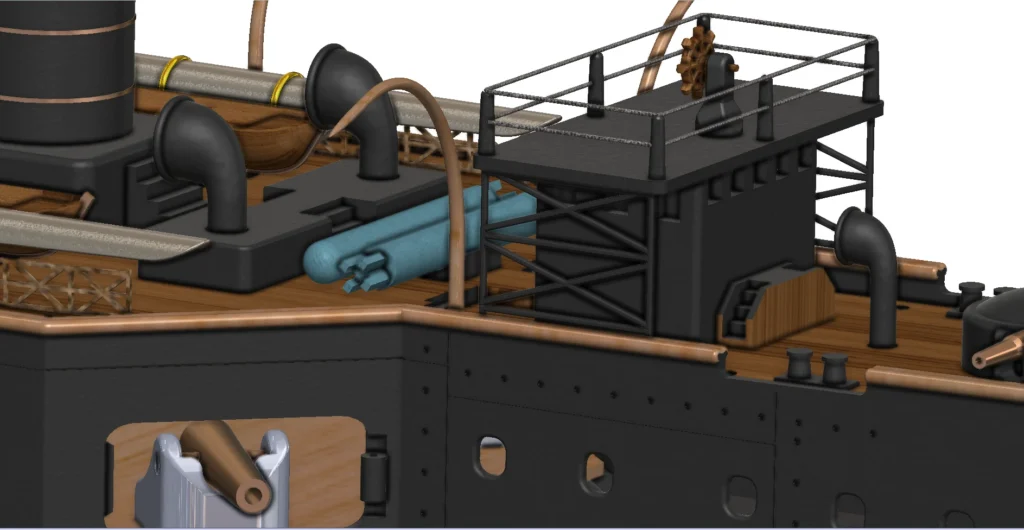
The ship’s design was robust and innovative for its time. It featured a sturdy iron hull protected by thick armor plating, making it highly resilient to enemy attacks. Armed with a formidable battery of guns, including heavy artillery pieces, the Feth-i Bulend possessed both offensive firepower and defensive capabilities, making it a formidable presence on the seas.

Strategic Importance and Service Record
The strategic significance of the Feth-i Bulend was immense. It bolstered the Ottoman Empire’s naval power and served as a deterrent to potential adversaries in the region. The ship played active roles in various naval operations and conflicts, showcasing its versatility and combat readiness.
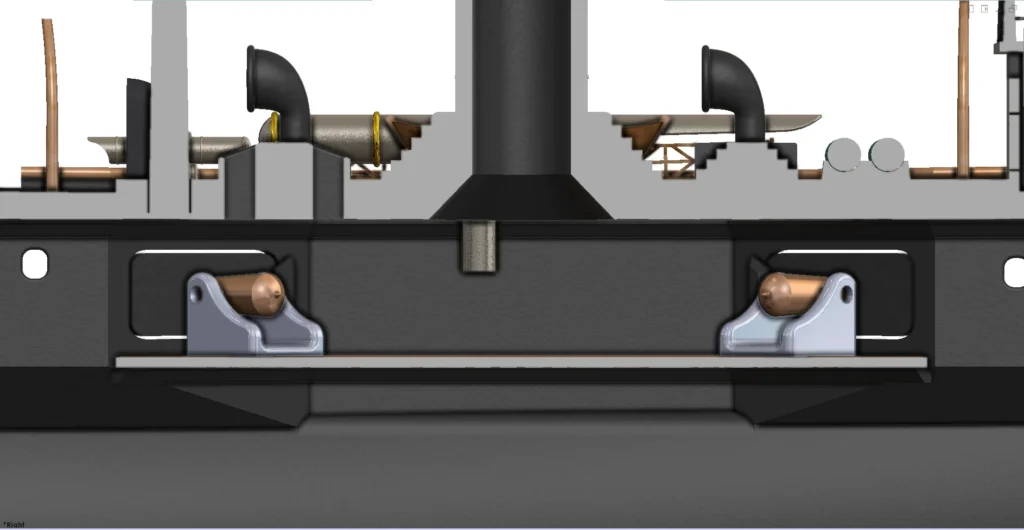
One notable engagement involving the Feth-i Bulend was during the Russo-Turkish War of 1877-78. The ship’s presence in the Black Sea provided crucial support to Ottoman naval forces and contributed to strategic maneuvers during the conflict.
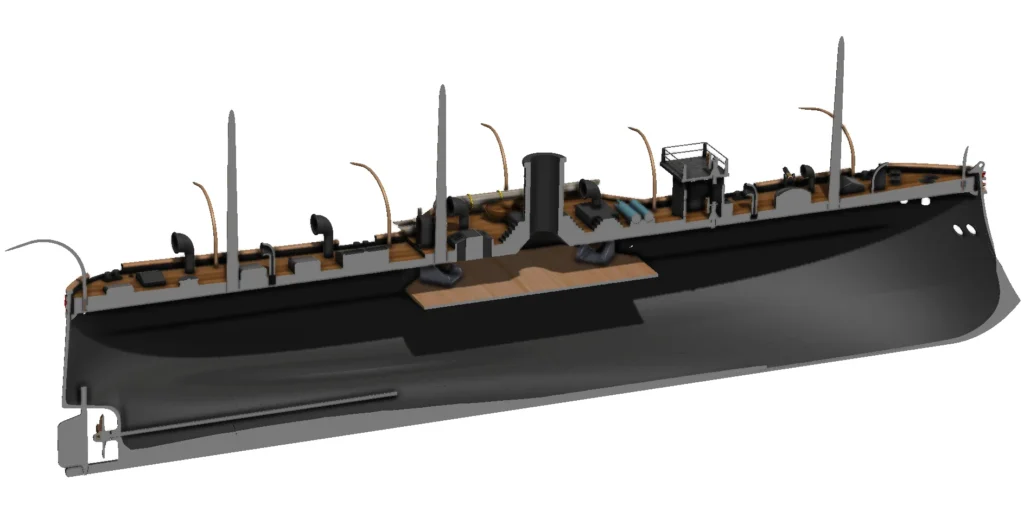
Legacy and Impact
The legacy of the Feth-i Bulend extended beyond its active service. It inspired further developments in Ottoman naval architecture and influenced subsequent generations of warship designs. The experience gained from operating ironclads like the Feth-i Bulend paved the way for advancements in naval tactics and strategies within the empire.
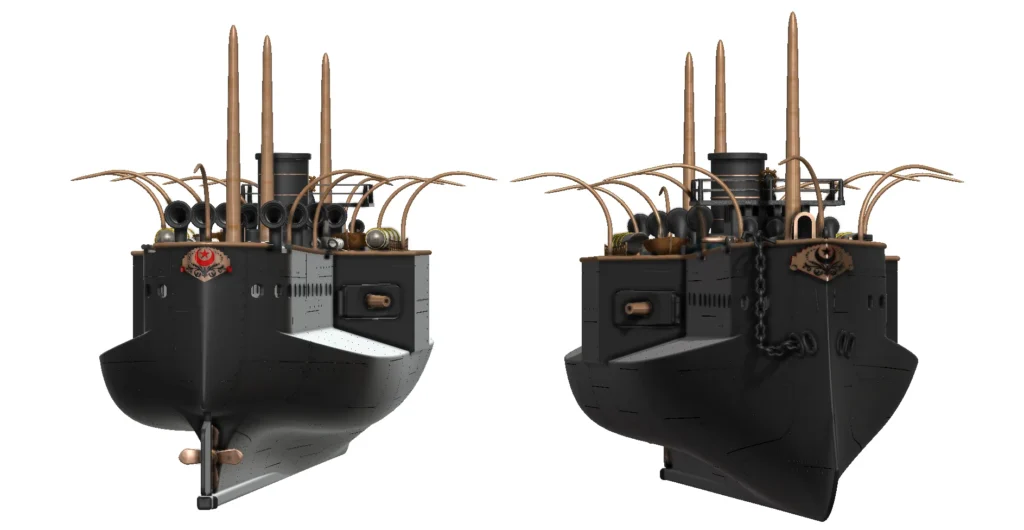
Despite eventually being decommissioned and replaced by newer naval vessels, the Feth-i Bulend’s legacy endured in the annals of Ottoman naval history. It remains a symbol of the empire’s maritime ambitions and technological prowess during a transformative era in naval warfare.

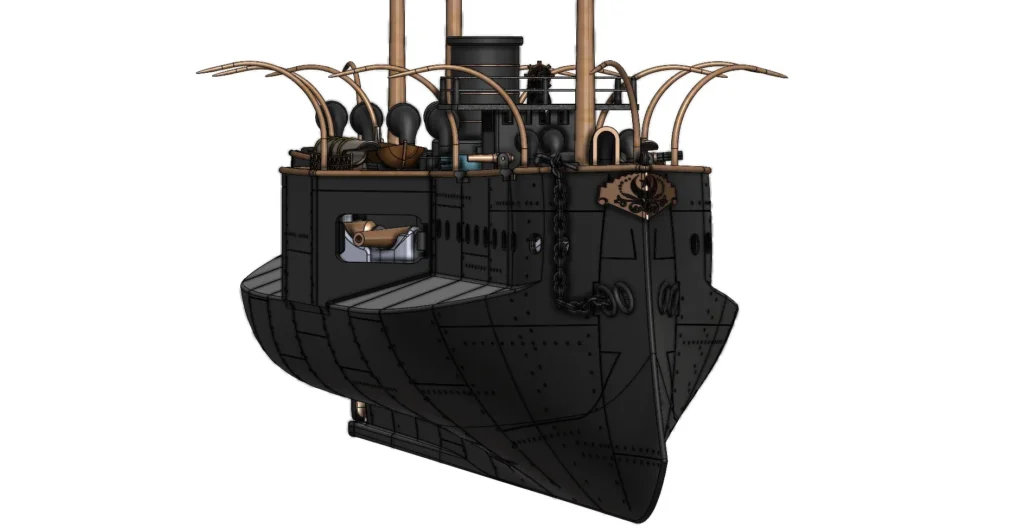
The story of the Feth-i Bulend encapsulates the Ottoman Empire’s journey into the age of ironclad warships and its quest for maritime supremacy. Through its technological advancements, strategic significance, and enduring legacy, the Feth-i Bulend remains a testament to the empire’s maritime heritage and its contributions to naval innovation in the 19th century.
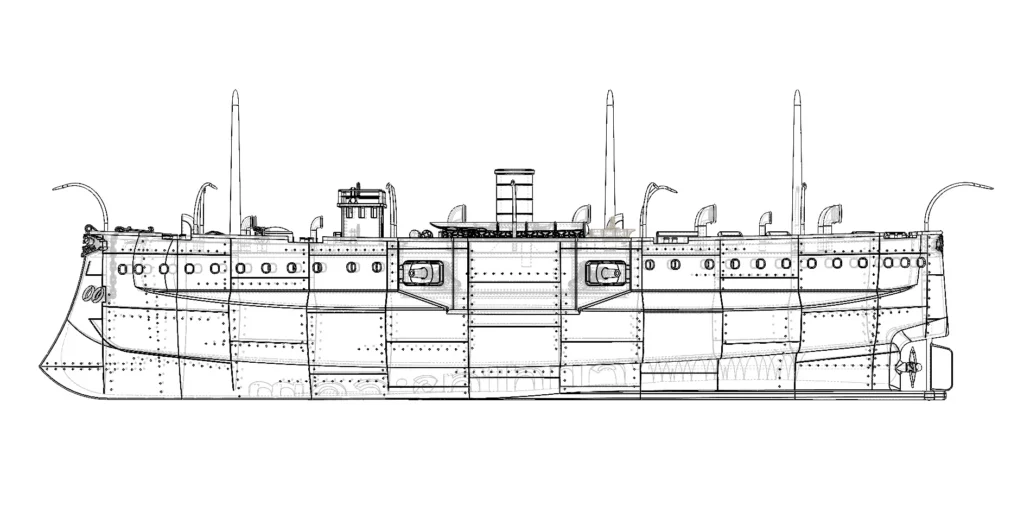
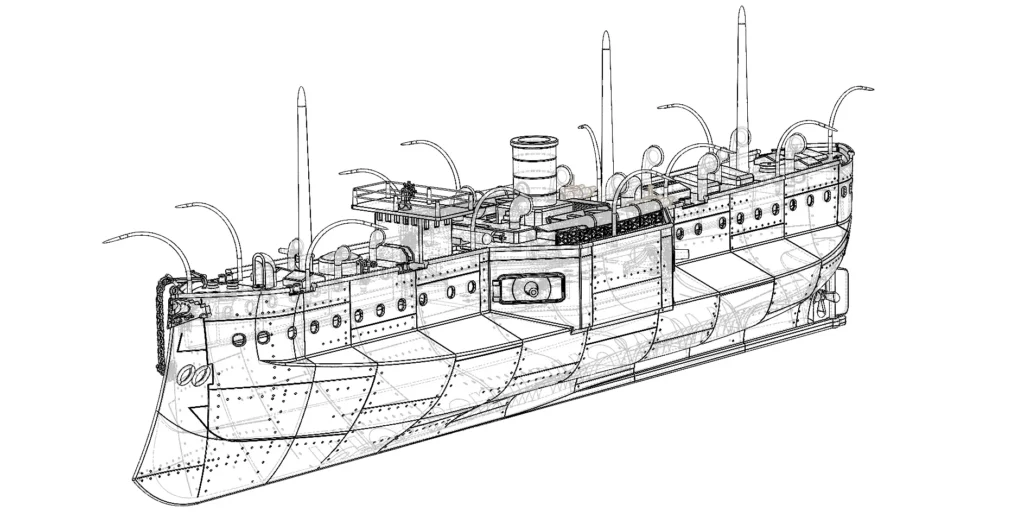
3D model Feth-i Bülend
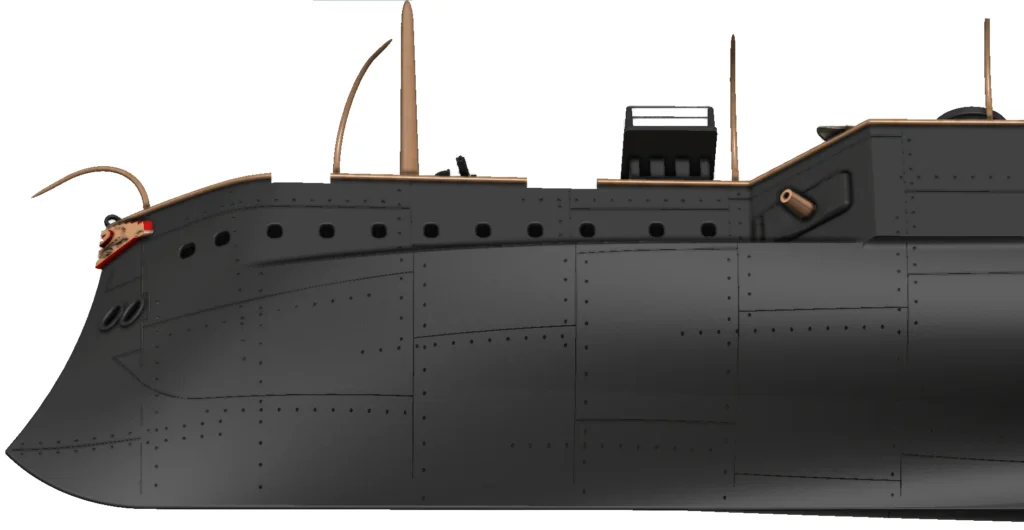
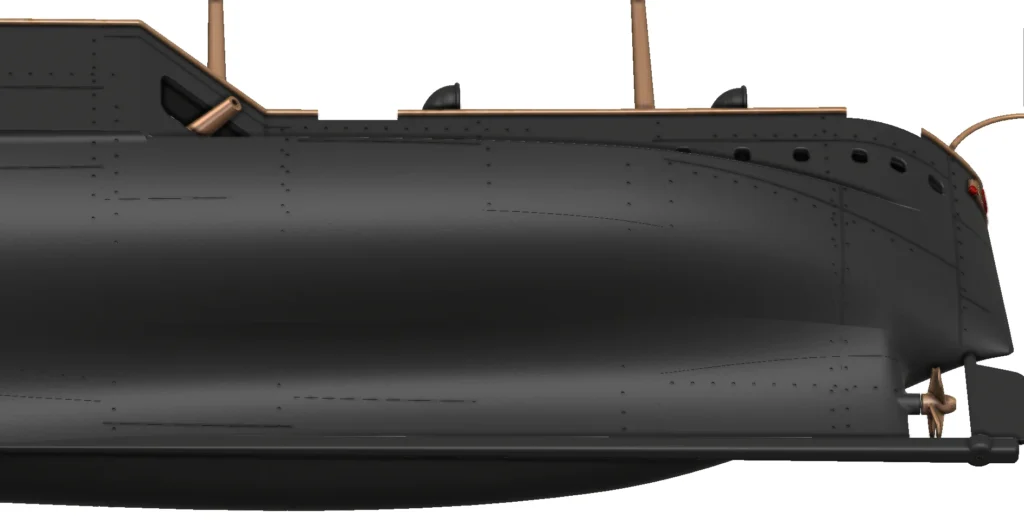
Creating a 3D printable model of the Ottoman ironclad Feth-i Bulend opens up a range of exciting possibilities:
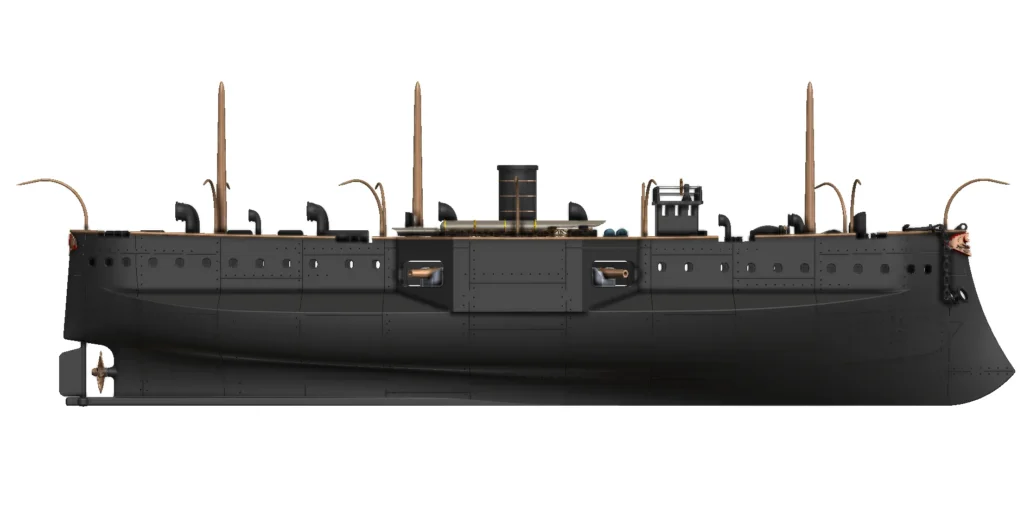
- Educational Purposes: A 3D printable model can be used in educational settings to teach students about naval history, engineering, and maritime warfare. It provides a hands-on learning experience, allowing students to explore the intricate details of the ship’s design and construction.
- Historical Reproduction: Enthusiasts and historians can use the 3D printable model to recreate historically accurate replicas of the Feth-i Bulend. This can be part of museum exhibits, historical reenactments, or private collections dedicated to preserving naval heritage.
- Gaming and Simulation: The 3D model can be integrated into maritime-themed video games, simulations, or virtual reality experiences. Players can interact with a digital representation of the Feth-i Bulend, exploring its features and experiencing naval combat scenarios.
- Engineering Analysis: Engineers and naval architects can utilize the 3D model for technical analysis and simulations. It allows for studying the ship’s structural integrity, hydrodynamics, and performance characteristics, aiding in research and development projects.
- Customization and Modification: With a 3D printable model, enthusiasts can customize and modify the design of the Feth-i Bulend, creating unique variations or fantasy interpretations. This creativity adds a new dimension to exploring historical naval concepts.
- Collectibles and Memorabilia: The 3D printable model can be used to produce collectible items and memorabilia related to the Feth-i Bulend. These can include scale models, figurines, and other merchandise for enthusiasts and collectors.
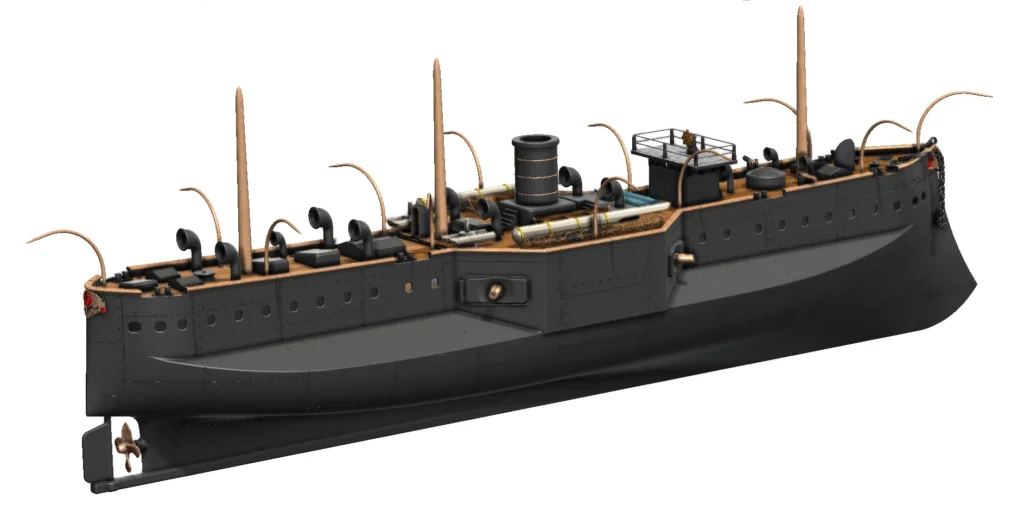
Overall, a 3D printable model of the Feth-i Bulend not only preserves the historical legacy of this iconic ironclad warship but also inspires creativity, learning, and exploration across various domains.
You can also use our 3d printable, multi-piece model of the ironclad for building your own legend by clicking here. The model is a 3mm thick hull with empty interior, well suitable for R/C projects. This is a 80MB file pack that includes Feth-i Bülend in high quality STL files (89 separate files) and Unreal Engine Compatible GLB file. The free STL file for the “Feth-Bülend on the high seas” panorama is below.
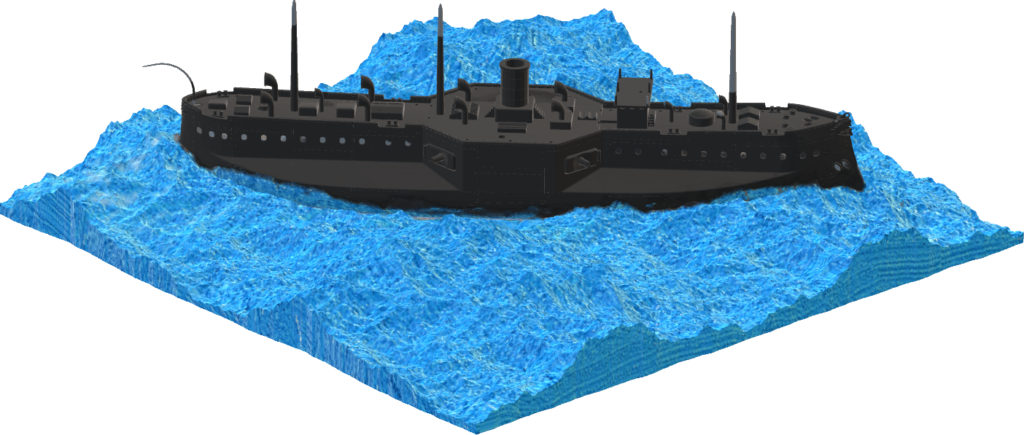
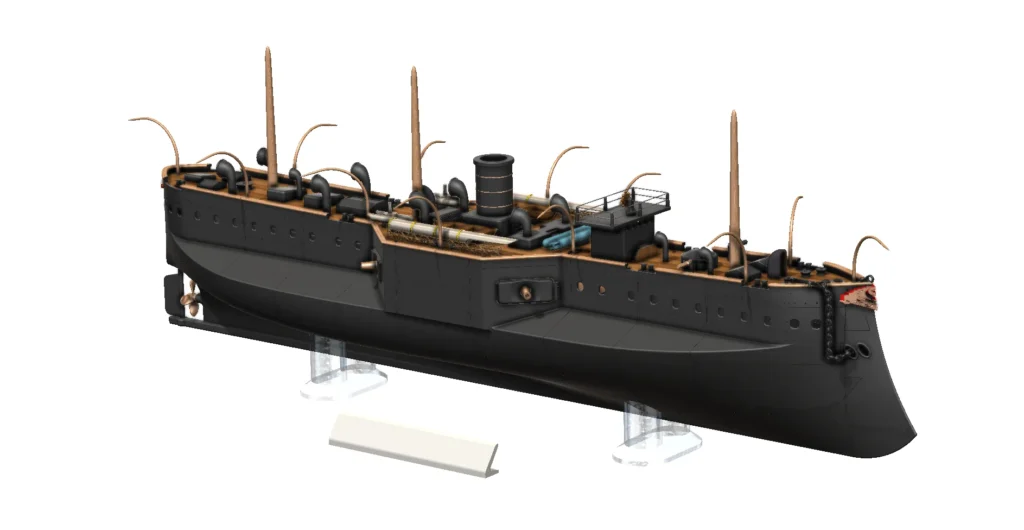






 Users Today : 18
Users Today : 18 Users Yesterday : 88
Users Yesterday : 88 Users Last 7 days : 558
Users Last 7 days : 558 Views Today : 39
Views Today : 39 Views Yesterday : 413
Views Yesterday : 413 Views Last 7 days : 2250
Views Last 7 days : 2250 Total views : 1288101
Total views : 1288101 Who's Online : 1
Who's Online : 1